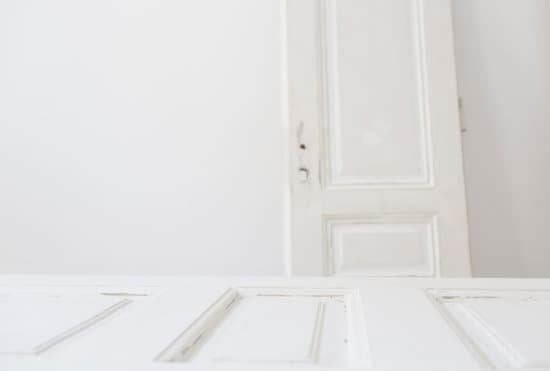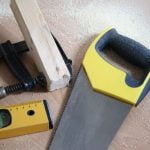Are you considering making some improvements to your home, but unsure about how to finance them? If so, you’re not alone. Many homeowners struggle with the question of what kind of loan is best for home improvements. In this blog post, we will delve into the world of home improvement loans and explore the various options available to help you make an informed decision.
Home improvement loans are specifically designed to fund renovation or remodeling projects, allowing homeowners to make upgrades or repairs to their properties. But with so many loan options out there, it can be overwhelming to determine which one is best suited for your needs. From personal loans to home equity lines of credit (HELOC) and cash-out refinancing, each type of loan comes with its own set of benefits and drawbacks.
In this article, we will break down the different types of home improvement loans and examine their pros and cons. We will also discuss eligibility requirements and provide valuable insights on how to select the most suitable loan based on your project scope and financial situation.
Whether you’re planning a minor renovation or a major overhaul, understanding the various loan options available can make a significant difference in achieving your home improvement goals. Stay tuned for expert advice on finding the best loan for your renovation project.
Understanding Home Improvement Loans
When homeowners decide to make improvements to their homes, they often need financial assistance to fund these projects. This is where home improvement loans come into play. Home improvement loans are specifically designed for financing renovation and remodeling projects. Unlike other types of loans, such as personal loans or auto loans, home improvement loans are intended for the sole purpose of enhancing a property.
What Sets Home Improvement Loans Apart
One key difference between home improvement loans and other types of financing is that the funds from a home improvement loan can only be used for renovation purposes. This restriction ensures that the borrowed money is directly invested back into the property, which can increase its value over time. Additionally, home improvement loans typically offer lower interest rates compared to personal loans or credit cards, making them a more cost-effective option for funding larger-scale projects.
Another distinguishing factor is that home improvement loans are often secured by the property itself. This means that if the borrower defaults on the loan, the lender has the right to foreclose on the property to recoup their losses.
As a result, borrowers may be able to qualify for higher loan amounts and longer repayment terms due to this added security for the lender. Understanding these unique aspects of home improvement loans can help homeowners make informed decisions when it comes to financing their renovation projects.
Types of Home Improvement Loans
When it comes to financing home improvement projects, there are several options available for homeowners to choose from. Each type of loan has its own set of terms, interest rates, and potential risks, so it’s essential to understand the differences before making a decision. The most common types of home improvement loans include personal loans, home equity loans, home equity lines of credit (HELOC), and cash-out refinancing.
Personal loans are unsecured loans that do not require collateral and can be used for a variety of purposes, including home improvements. They offer fixed interest rates and repayment terms, making budgeting easier for homeowners. However, personal loans typically have higher interest rates compared to other types of home improvement loans.
Home equity loans are secured by the equity in the borrower’s home and offer fixed interest rates and predictable monthly payments. This type of loan is best suited for larger projects with a specific budget in mind. Homeowners should keep in mind that their property serves as collateral, meaning they could risk foreclosure if they default on the loan.
One alternative to a home equity loan is a HELOC, which allows homeowners to borrow against the equity in their homes on an as-needed basis. HELOCs offer more flexibility than traditional home equity loans, as borrowers can draw funds multiple times within a specified draw period. However, this also means that interest rates may fluctuate over time, potentially leading to higher costs for borrowers.
Benefits and Drawbacks
When considering home improvement loans, it’s important to weigh the benefits and drawbacks of each type to determine which one best suits your needs. Each option comes with its own set of advantages and disadvantages, including varying interest rates, repayment terms, and potential risks.
Personal Loans
Personal loans offer the advantage of being unsecured, meaning you don’t have to put up your home or other assets as collateral. They also typically have fixed interest rates and predetermined repayment terms, making it easier to budget for the loan. However, personal loans often come with higher interest rates than other types of home improvement loans, which can end up costing you more in the long run.
Home Equity Loans
Home equity loans allow homeowners to borrow against the equity they’ve built in their homes. These loans often come with lower interest rates than personal loans because they are secured by the home itself. Additionally, the interest paid on a home equity loan is often tax-deductible. On the downside, if you fail to make payments on a home equity loan, you risk losing your home through foreclosure.
Home Equity Lines of Credit (HELOC)
A HELOC operates similarly to a credit card where you have a revolving line of credit that you can borrow against as needed. This provides flexibility in accessing funds for ongoing renovation projects or future expenses. However, HELOCs often have variable interest rates, which means your monthly payments can fluctuate over time. Additionally, failing to make payments on a HELOC can also result in the loss of your home through foreclosure.
Cash-Out Refinancing
Cash-out refinancing involves replacing your existing mortgage with a new one that has a higher principal balance in order to access the equity in your home as cash. This option allows you to secure a lower interest rate compared to a personal loan or HELOC but extends the repayment term for your entire mortgage.
It’s important to weigh the long-term impact on your financial situation before choosing this option as it could potentially increase the total cost of borrowing over time.
In summary, each type of home improvement loan comes with its own set of advantages and drawbacks when it comes to interest rates, repayment terms, and potential risks. It’s crucial for homeowners to carefully consider their financial situation and long-term goals before selecting the best loan for their specific needs.
Eligibility and Requirements
When it comes to obtaining a home improvement loan, there are certain eligibility requirements and criteria that lenders typically use to evaluate applicants. It’s important to understand these qualifications in order to determine which type of loan is best suited for your individual financial situation. Below are some key factors to consider when seeking a home improvement loan:
- Credit Score: One of the most important factors that lenders consider when evaluating a borrower’s eligibility for a home improvement loan is their credit score. A higher credit score often translates to better loan terms and interest rates. Most lenders prefer a credit score of 650 or above for home improvement loans.
- Income: Lenders will also assess an applicant’s income to ensure they have the financial capability to repay the loan. A steady source of income is crucial when applying for any type of loan, including those for home improvements.
- Home Equity: For certain types of home improvement loans, such as home equity loans and HELOCs, lenders will look at the amount of equity a homeowner has in their property. The more equity you have, the more likely you are to qualify for a larger loan amount with favorable terms.
In addition to these primary qualifications, lenders may also consider other factors such as debt-to-income ratio and employment history when determining an applicant’s eligibility for a home improvement loan.
Understanding these eligibility requirements can help you determine which type of home improvement loan you may qualify for based on your financial circumstances, ultimately guiding you toward making an informed decision on the best loan option for your needs.
Finding the Best Loan for Your Needs
When it comes to choosing the best loan for your home improvement project, it’s essential to consider the scope of the work you plan to undertake, your budget, and your personal financial situation. Each type of loan has its own set of advantages and disadvantages, so it’s important to weigh these factors carefully before making a decision.
If you’re planning a smaller project with a relatively low budget, a personal loan may be the most suitable option. Personal loans are unsecured, meaning they don’t require collateral, and can be used for a wide range of purposes, including home improvements. They typically have fixed interest rates and predictable monthly payments, making it easier to budget for the repayment.
On the other hand, if you’re tackling a larger renovation or have significant equity in your home, a home equity loan or a home equity line of credit (HELOC) might be more appropriate. These types of loans use your home as collateral and generally have lower interest rates compared to personal loans.
A cash-out refinance could also be an option if you want to replace your existing mortgage with a new one that has better terms and take out the difference in cash for your home improvement project.
It’s crucial to conduct thorough research and compare available loan options before making a decision. Consider consulting with financial advisors or loan officers to get personalized advice based on your specific circumstances. By evaluating the scope of your project, your budget constraints, and your financial standing, you can make an informed choice that will best suit your needs.
| Loan Type | Key Features |
|---|---|
| Personal Loan | Unsecured; Fixed interest rates; Suitable for small projects |
| Home Equity Loan/HELOC | Secured by home equity; Lower interest rates; Suitable for larger projects |
| Cash-Out Refinance | New mortgage with better terms; Provides cash for renovations |
Application Process
When it comes to applying for a home improvement loan, there are several steps involved in the application process. The first step is to gather all necessary documentation, which typically includes proof of income, credit history, and details about the proposed home improvement project. Lenders will also require information about the property being improved, such as its current value and any existing mortgage or liens.
Once all required documentation is gathered, the next step is to submit an application to the lender of your choice. This can usually be done online, over the phone, or in person at a local branch office. During the application process, borrowers may also need to provide additional information or clarification on certain aspects of their financial situation or project plans.
After submitting an application, the approval process begins. Lenders will review the borrower’s creditworthiness, income, and other financial factors to determine if they qualify for the loan. The timeline for approval can vary depending on the lender and the complexity of the application.
Once approved, funding for the home improvement project will be provided according to the agreed upon terms and timeline outlined in the loan agreement. It’s important for borrowers to carefully review all terms and conditions before accepting a loan offer to ensure they understand their responsibilities and obligations.
Case Studies
One of the best ways to understand the impact of different types of home improvement loans is through real-life examples. These case studies will highlight how individuals have successfully used personal loans, home equity loans, home equity lines of credit (HELOC), and cash-out refinancing to fund their renovation projects. By examining these scenarios, readers can gain insights into the benefits and drawbacks of each type of loan and learn from the experiences of others.
In one case study, a homeowner opted for a personal loan to finance a kitchen remodel. With a fixed interest rate and predictable monthly payments, the personal loan provided the borrower with the funds needed for the project without tapping into home equity.
This approach allowed the individual to complete the renovation without affecting their current mortgage or risking their home as collateral. However, it’s important to note that personal loans typically have higher interest rates compared to other options, which could result in increased overall costs.
Another case study involves a homeowner who chose a home equity line of credit (HELOC) to fund an extensive landscaping project. By leveraging the equity in their property, this individual was able to access a flexible line of credit with variable interest rates. This allowed them to draw funds as needed during different stages of the renovation, providing greater control over expenses.
However, HELOCs also come with potential risks such as variable interest rates that could lead to higher payments over time. These case studies showcase how individuals can strategically utilize different types of home improvement loans based on their specific needs and financial circumstances. By evaluating these examples, readers can make more informed decisions when considering similar renovation projects and financing options for their homes.
Conclusion
In conclusion, choosing the right loan for home improvements depends on various factors such as the scope of the project, budget, and personal financial situation. It is essential to weigh the benefits and drawbacks of each type of loan, including interest rates, repayment terms, and potential risks. Additionally, it’s important to consider eligibility requirements, such as credit score, income, and home equity when determining which loan option is best suited for your needs.
When considering a home improvement project, it’s crucial to research and compare different types of loans to find the most suitable option. Personal loans may be ideal for smaller projects with a fixed budget, while home equity loans or HELOCs could be more beneficial for larger renovations where leveraging the equity in your home makes more financial sense.
Ultimately, it’s recommended to consult with a financial advisor or a lending specialist to discuss your options and assess your eligibility before applying for any type of home improvement loan. By carefully considering the information provided in this article and seeking professional advice if necessary, you can make an informed decision about which type of loan is best for your specific home improvement needs.
Frequently Asked Questions
Which Loan Is Best for Home Renovation?
The best loan for home renovation depends on individual circumstances such as credit score, equity in the home, and the amount of money needed. Options to consider include home equity loans, cash-out refinancing, personal loans, or FHA 203(k) loans.
It’s important to compare interest rates, terms, and fees to determine the most suitable loan for your specific renovation needs.
Are Home Improvement Loans a Good Idea?
Home improvement loans can be a good idea if they help increase the value of your property or improve your living conditions. However, it’s important to carefully consider the cost of borrowing and ensure that you have a solid plan for using the funds effectively.
Researching different loan options and understanding their impact on your overall financial situation is crucial before making a decision.
What Type of Loans Do Lenders Give to Finance the Addition of Improvements to Property?
Lenders offer various types of loans to finance property improvements, including home equity loans, home equity lines of credit (HELOC), FHA Title I Property Improvement Loans, personal loans, and cash-out refinancing.
Each type of loan has its own requirements and benefits, so it’s essential to explore all options and consider factors such as interest rates, repayment terms, and eligibility criteria before choosing the right loan for financing property improvements.

I’m thrilled to have you here as a part of the Remodeling Top community. This is where my journey as an architect and remodeling enthusiast intersects with your passion for transforming houses into dream homes.





